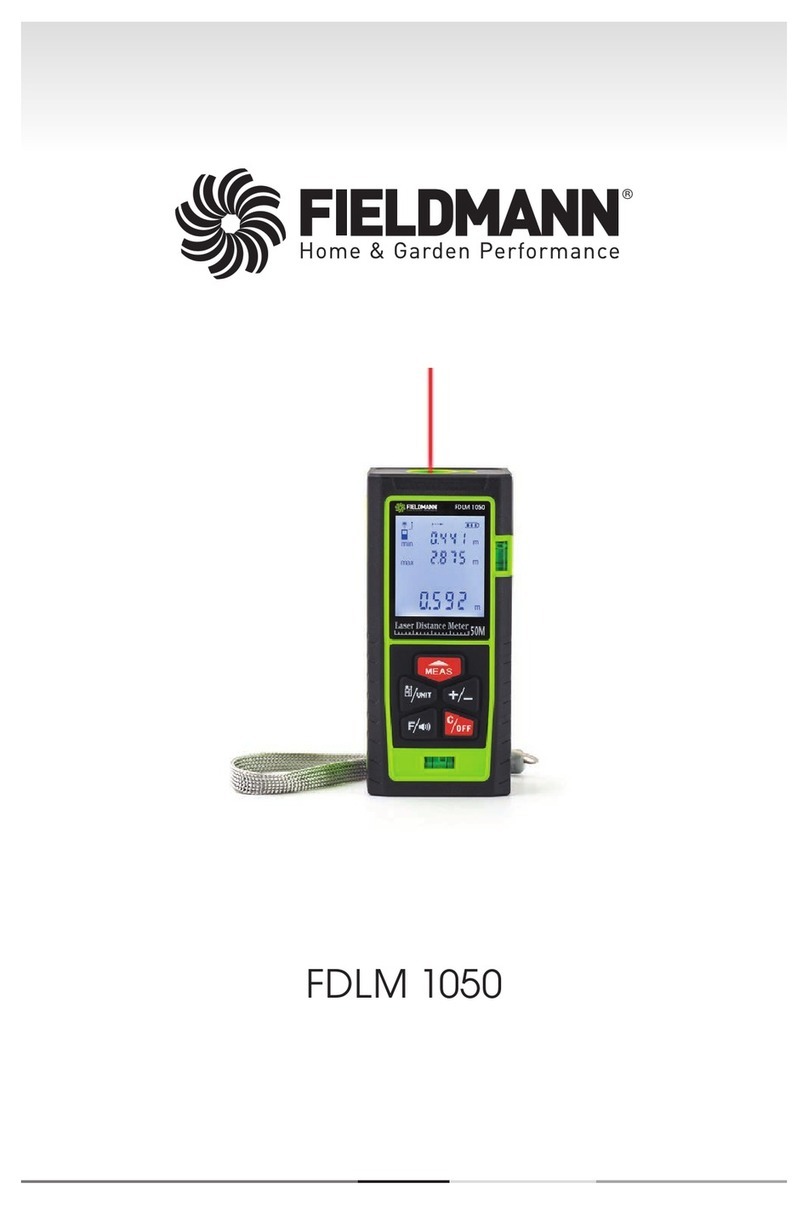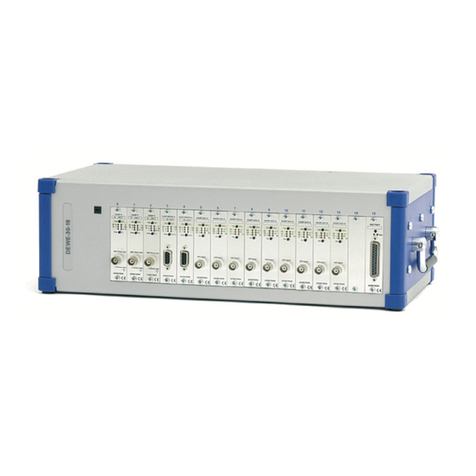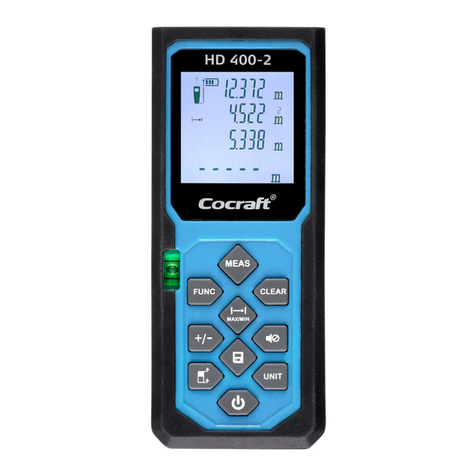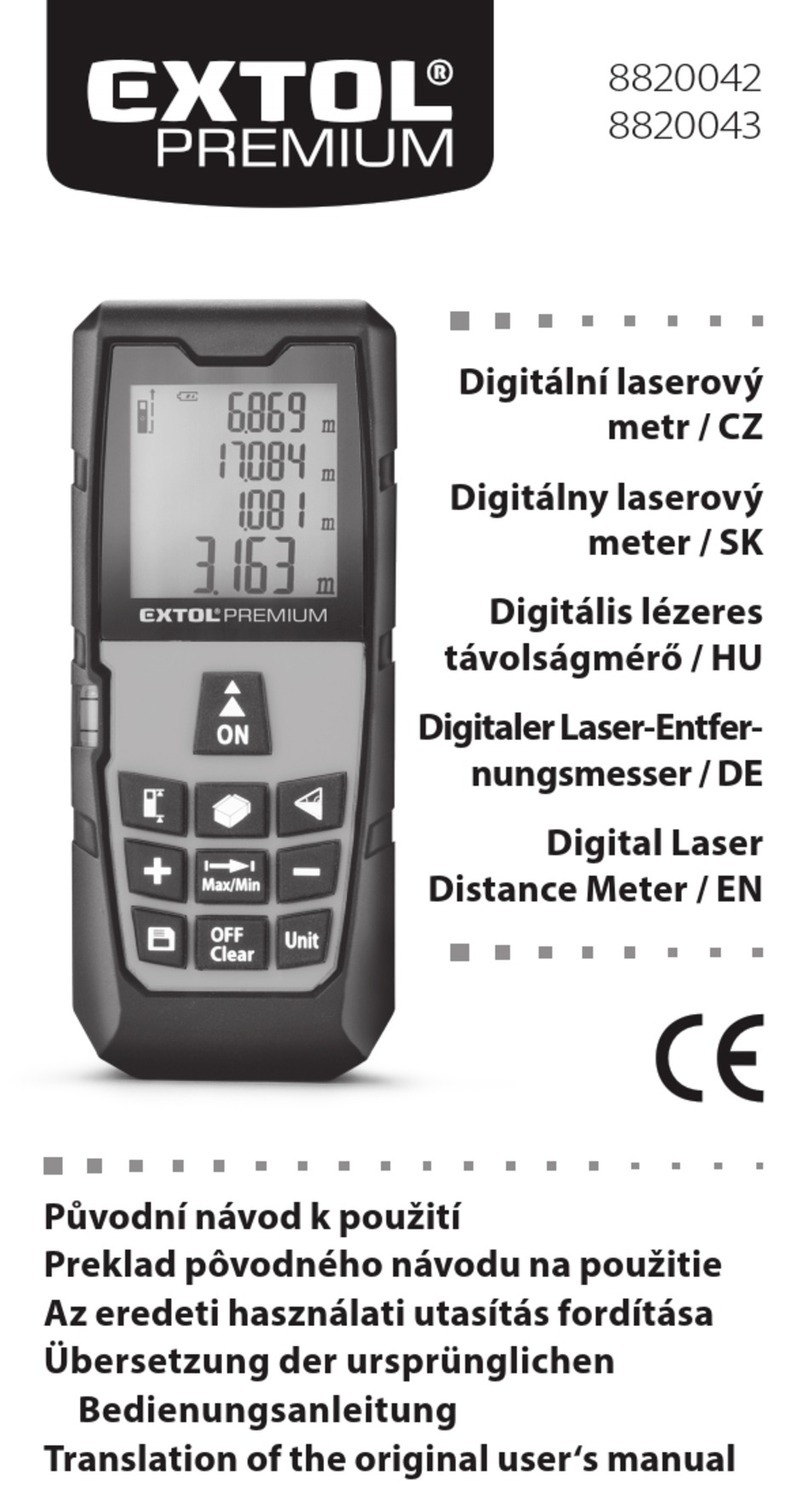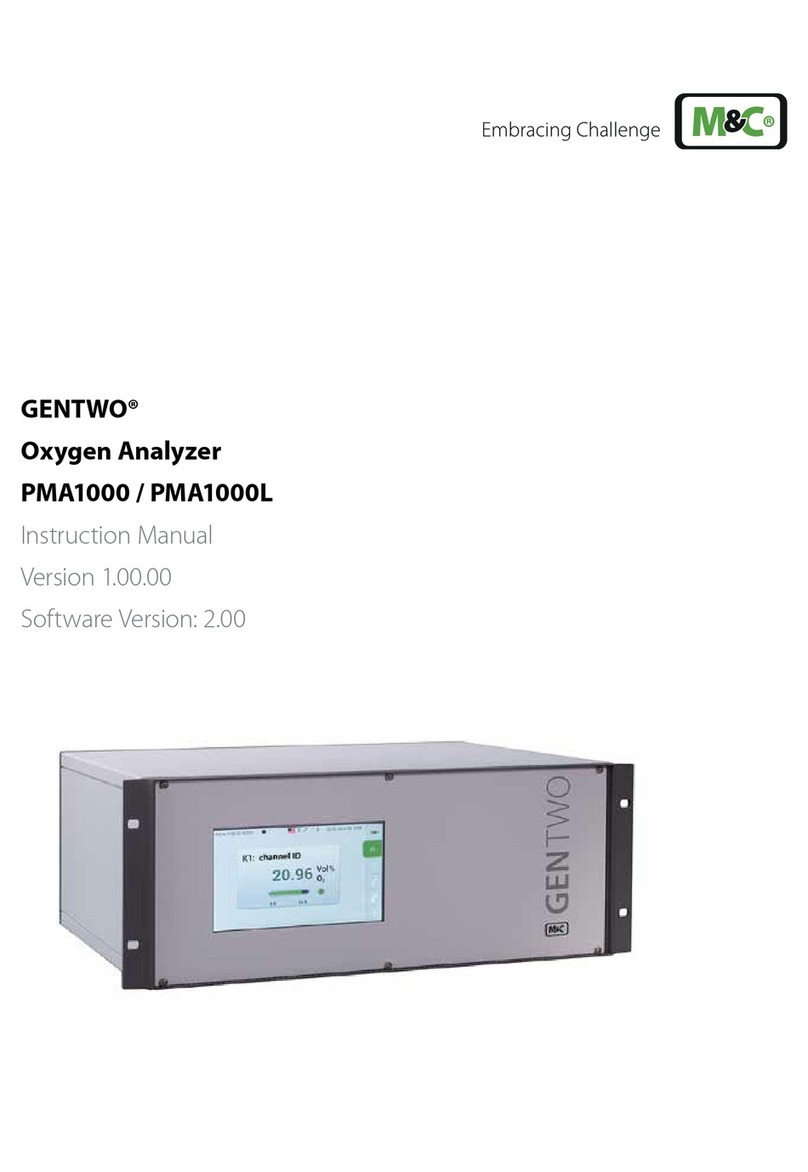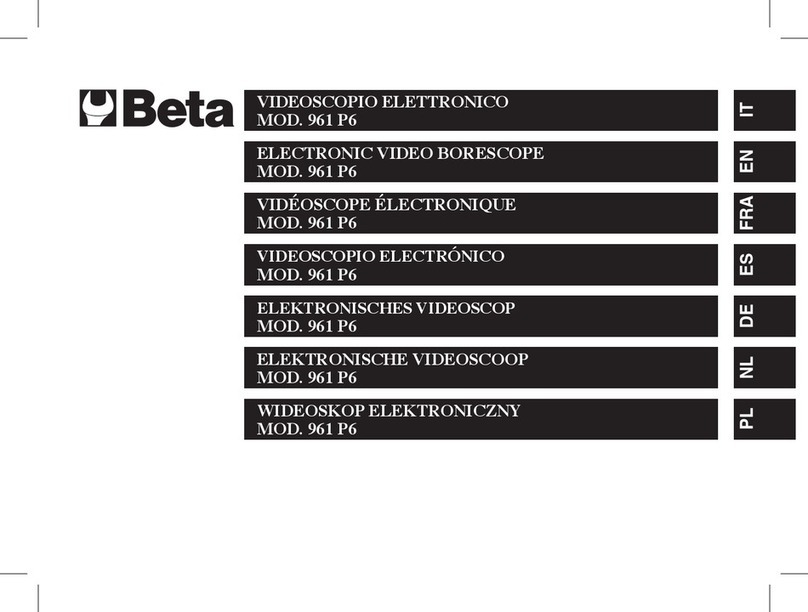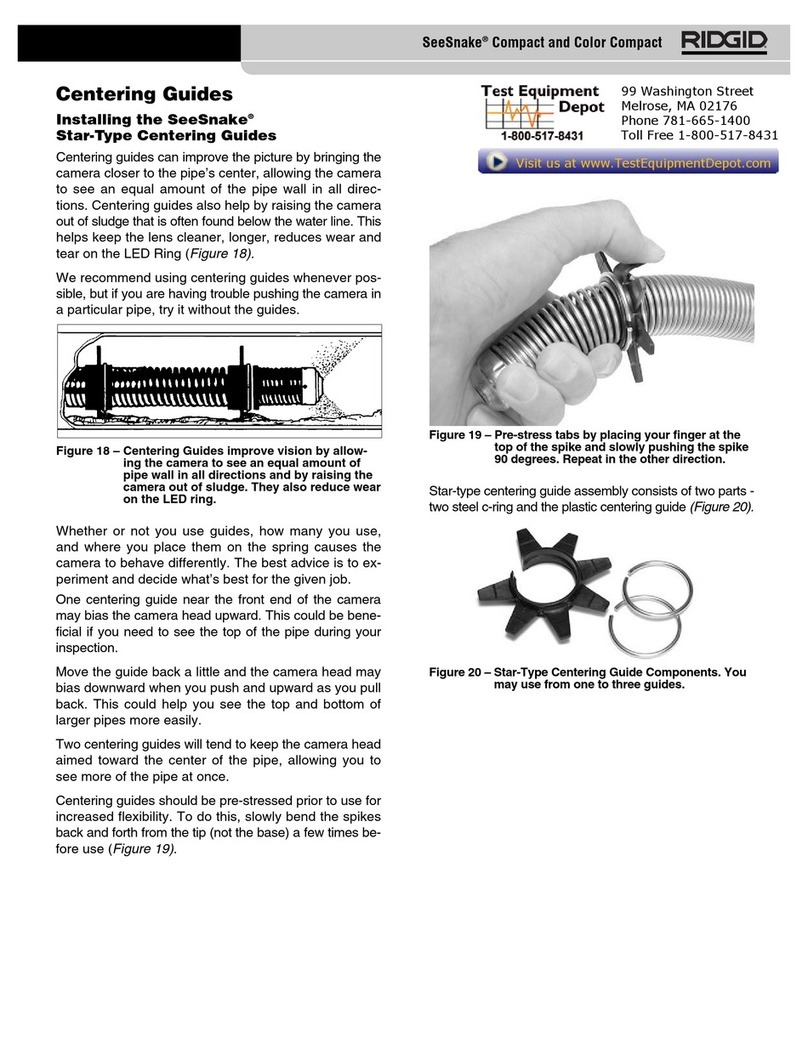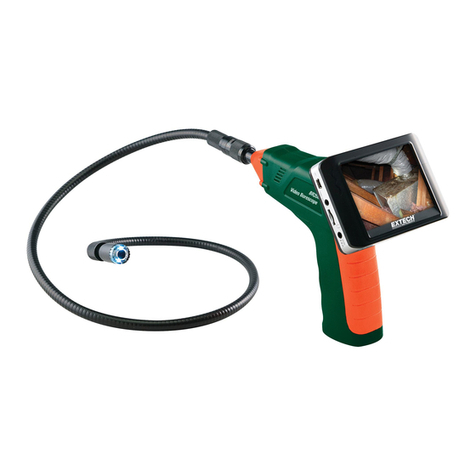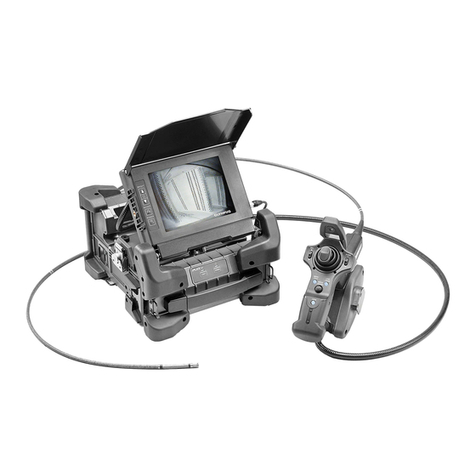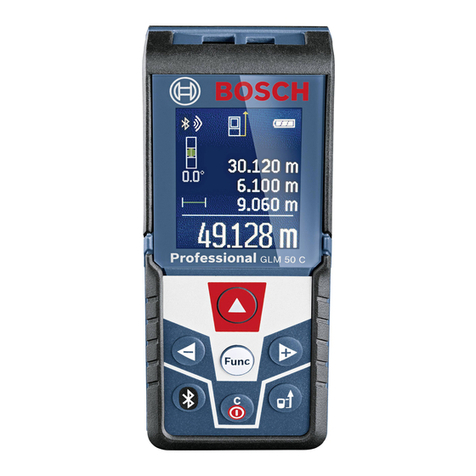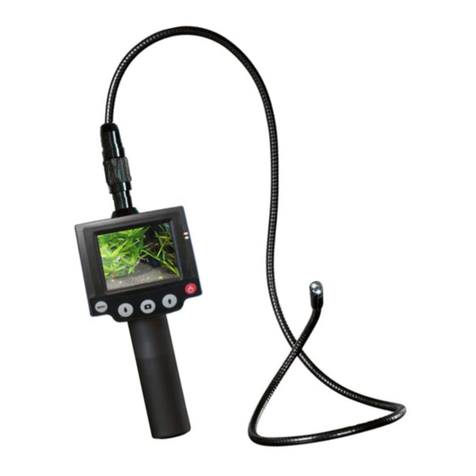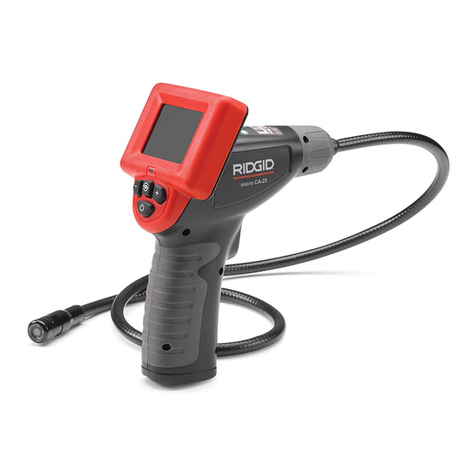
1-Istruzioni di sicurezza
1-1.Uso consentito
•
Misurazione delle distanze
1-2. Usovietato
•
Uso dello strumento senza istruzioni.
•
Usoal difuori deilimitiindicati.
•
Disattivazione dei sistemi di sicurezza e rimozione delle etichette esplicative e di pericolo.
•
Apertura dell'attrezzatura utilizzando attrezzi (cacciaviti, ecc.), nella misura in cui
non lo sonoespressamente consentito per determinati casi.
•
Effettuarelamodificaolaconversionedelprodotto.
•
Uso di accessori di altri produttori senza l'espresso approvato.
•
Comportamento deliberato o irresponsabile sul ponteggio, quando si usano scale,
quandosimisuravicinoamacchineinfunzioneoinprossimitàdipartidimacchineo
installazioni non protette.
•
Mirando direttamente al sole.
•
Misure di sicurezza inadeguate nel sito di rilevamento (ad esempio quando si misura
su strade,cantieri, ecc.)
1-3.Classificazione Laser
Questo ha prodotto un raggio laser visibile che emerge dalla parte anteriore
del strumento.
ProdottiLaser Class2:
Nonfissareilraggiolaserodirigerloversoaltrepersoneinutilmente.
La protezione dell'occhio è normalmente offerta dall'avversione
rispostecompresoilriflessodelbattitodiciglia.
ATTENZIONE:
Guardando direttamente nel raggio con ausili ottici (ad es. Binocoli, telescopi)
puòessere pericoloso.
Precauzioni:
Non guardare direttamente nel raggio con supporti ottici.
ATTENZIONE:
Guardare nel raggio laser può essere pericoloso per gli occhi.
Precauzioni:
Non guardare nel raggio laser. Assicurarsi che il laser sia puntato sopra o
sottoillivellodegli occhi.
4
